Certain neighbourhoods hold precious memories. These pockets of nostalgia are retained in these neighbourhoods. A jog down memory lane means exactly that when you visit these areas. One such neighbourhood is Mandapeshwar and IC colony areas. So when my old friend T suggested that we meet there, I readily agreed. It was after about 6 years that I was going to be visiting the caves and over 10 years later meeting T as well. He was excited to show me around considering that he had been in the area since the 70s.
Mandapeshwar Caves was our first stop. The caves have been restored to some extent. A garden has come up in the old space where the cricket maidan used to be. He pointed out the remnants of two paws at the entrance of the caves. He said that two gloriously carved lions served as the dwarapalakas, and they could be seen until the 90s after which they were lost to time.
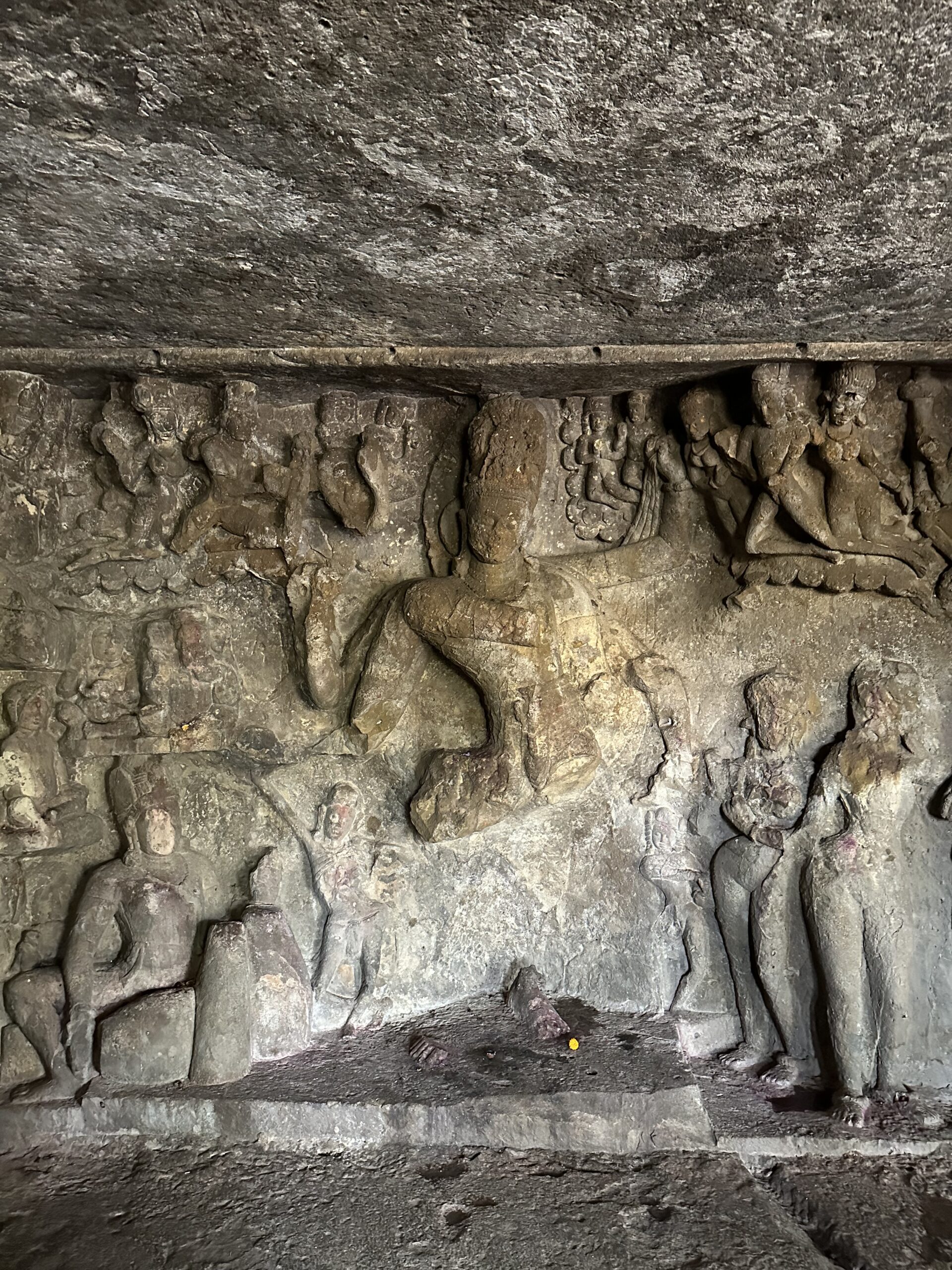




Much has been written about the caves (including by yours truly), as it is one of the most important and prominent rock cut caves. Built about 1500 years ago, these caves were taken over by the Portuguese and converted into a place of worship complete with an altar. There was even a church and a college for the priests built over the caves, the ruins of which can still be seen. The caves come alive during Kartik Poornima and are lit up with diyas all over, T explained. As he took us around the caves, a bunch of other tourists also joined us and our little group explored the dark corners of this beautiful cave. He also showed us one tunnel which is now sealed up, but legend has it that the tunnel used to lead one directly to Kanheri caves. Some say, it was a secret passage underwater to the Fort of Bassein too.
For him and his family, this would be a common site for visiting during holidays for my friend. He also told me that crossing over to Dahisar meant, just jumping over the rocks of the river Dahisar. The river had a decently heavy flow even in the month of May and had crystal clear water.
After visiting the various halls of the cave and admiring the sculptures, especially the carved Tandava Siva, we came out. I took the winding path to the top for a quick stroll down to the infirmary where I had spent a nice evening back in 2018. The vishu seen even then was in bloom across from the D’assisi ground. With all the work that had gone in renovating the caves, the resident snakes had apparently moved upto the ruins and hence going up is generally prohibited.





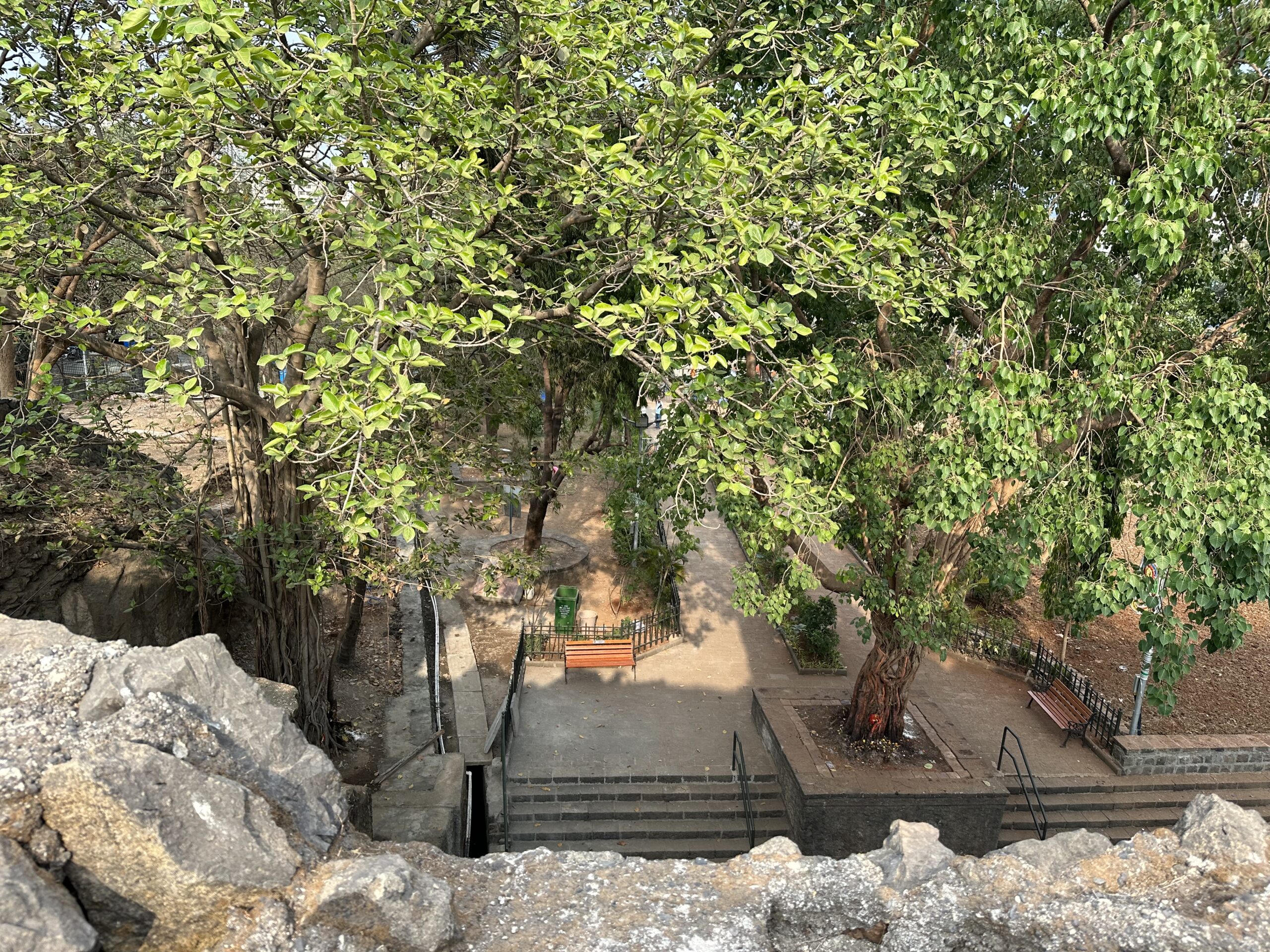

From here, we headed down across the crossroads of IC Colony where a good tree cover still exists. Every summer vacation I would cycle through these lanes as they provided a good shaded path everywhere I went. But the centre of all activity is of course is the Church, the Our Lady of Immaculate Conception Church or the IC church as it is commonly known. Mass was about to begin and the devout were seen walking in their Sunday best to the church. We decided to refresh ourselves at Hotel Ashirvaad – another legendary landmark known for their non-veg delights. From across our table, I could hear the choir sing as we sat and discussed my friend’s childhood in the area.
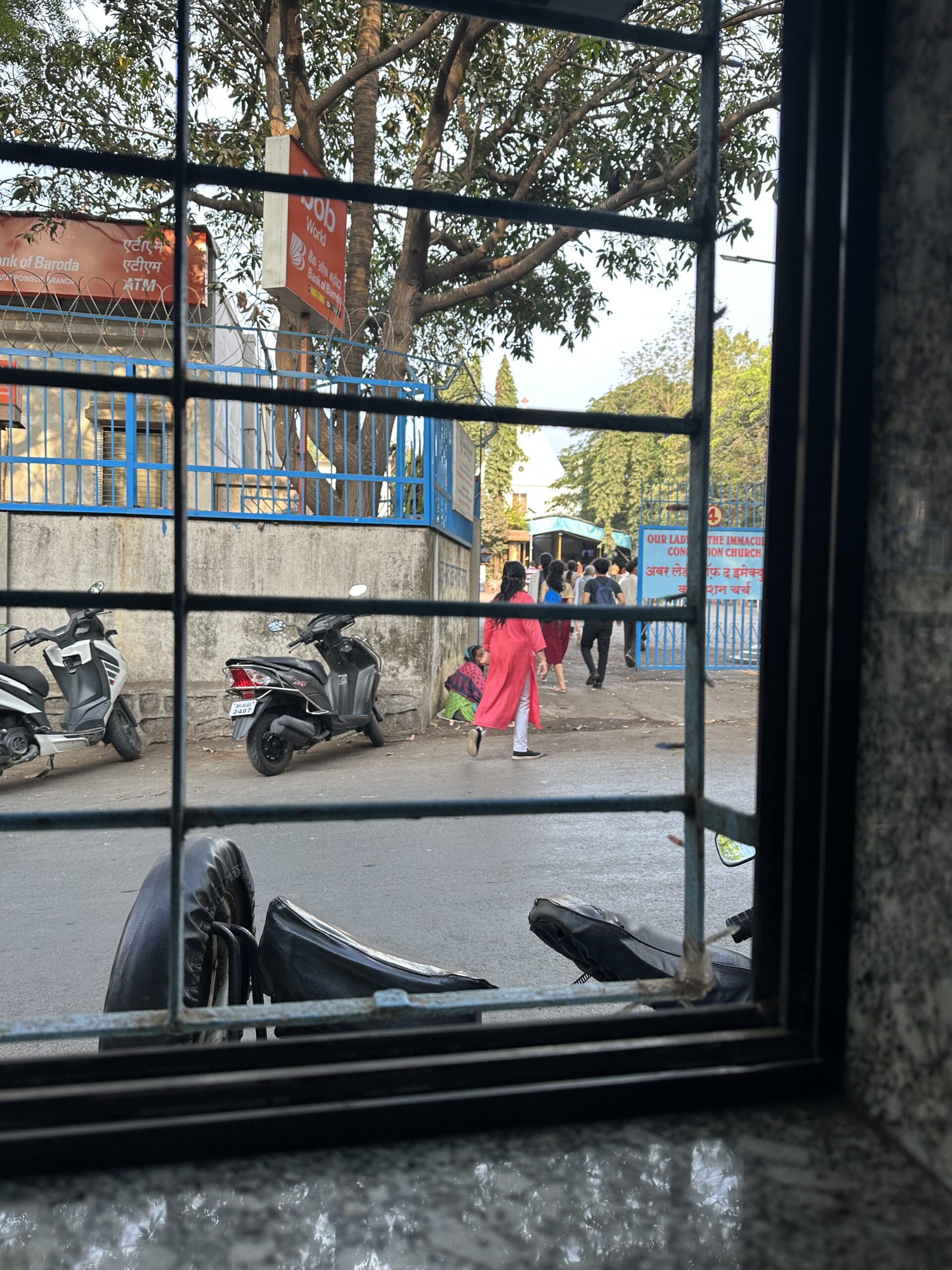
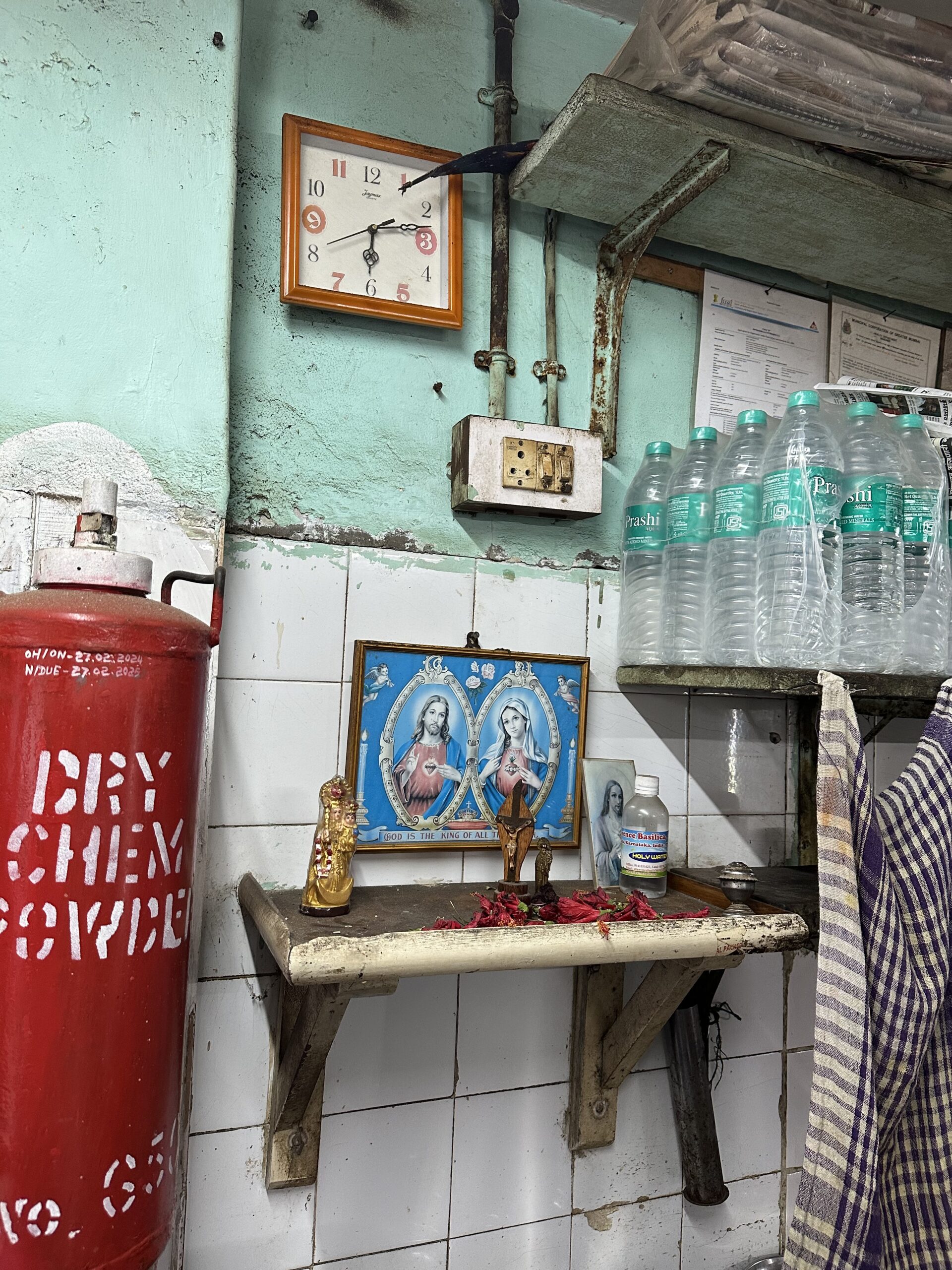
He was excited to show me the other part of this neighbourhood. LIC Colony, one neighbourhood which I had not visited before. He informed me that Charles Correa the legendary architect was tasked with converting this plot of land for LIC into a housing enclave for policyholders. I always thought that this was a colony only for the employees but turns out that this was part of the housing project that the government undertook in the 70s. There is a fascinating documentary titled Lovely Villa which captures the many facets of this area succinctly. You can watch it here.
LIC Colony is located on the undulating terrain, over what seems like a basalt outcrop jutting to the west. As you walk up and down the rolling terrain, you are greeted with bird calls and sounds of insects. There is very little traffic and old Correa creations stand silently on either side of the road. A management development institute of LIC stands on one side, which hosts many training programs for the staff. Within the boundary walls, I could see a mango orchard of sorts with many mango trees which apparently are sold every summer at a nearby fruit shop. T mentioned that these lanes are heavenly to walk through during the winter mornings and become even more delightful during the rains.
The road takes you down to the Shanti Ashram Bus Station. Another unique gem that I visited for the first time. The BEST Canteen there serves good chai and spicy misal. It is open from 5:30 am for the staff as well as the passengers. My friend told me that the morning walkers, the college students and even him come to this canteen to enjoy a good plate of bhurji pav in the mornings. It is not just a place to catch a bus to the station, but also a place to relax and chill.

The entire atmosphere of the colony was serene. There are old buildings with names affixed with Jeevan (Life). The vision of Charles Correa was evident as he used architecture as a tool to develop society. This has been documented much better here & here. But to see a neighbourhood without this background accompanied by my friend who has witnessed the changes was fascinating. It also allowed me to experience Correa’s creation first hand.


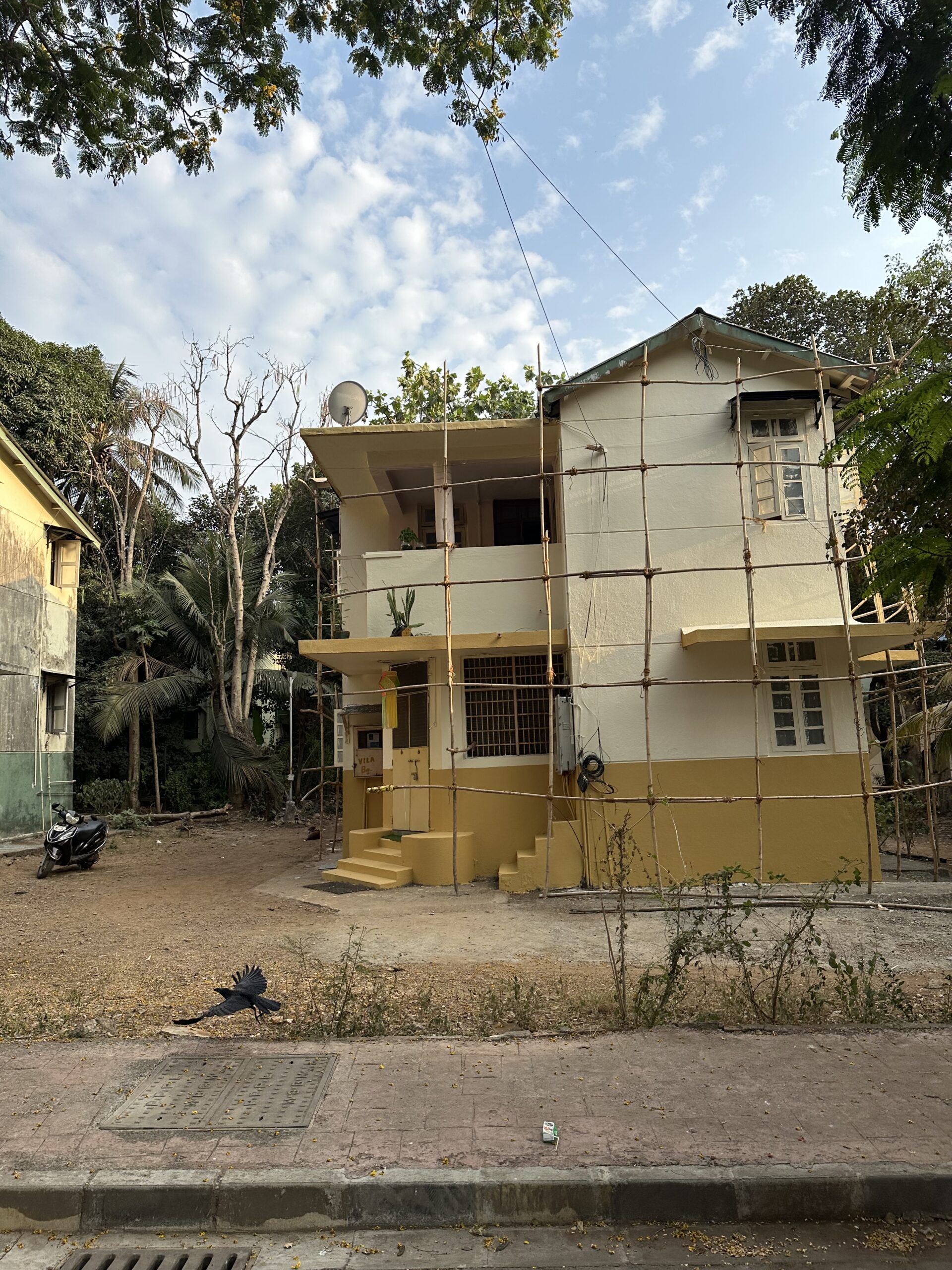
We met after a long time and I visited this neighbourhood after a long time as well. It was a good reintroduction to this part of town, where I have grown up and visited multiple times. But as you know, the more you learn about something, you realise how less you know about the place. Our walk brought me to Karuna Hospital where I saw my father lying on a cold gurney in February of 2018. And from here we made our way to Bhagwati hospital, where we parted ways with a promise of meeting again in the rains, as I caught a bus back home.
